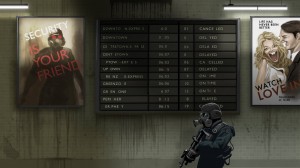 A while back, I posted part I of my conversation with indie-director, Nick Cross. Here’s part two. Nick’s got less than a month left on his IndieGoGo fundraising campaign to finance his next film, an ambitious attempt at producing an animated feature, Black Sunrise. We’ve got a link posted to the campaign, and I’d encourage all our readers to get involved and show your support for one of the most engaging film-makers our community has to offer.
A while back, I posted part I of my conversation with indie-director, Nick Cross. Here’s part two. Nick’s got less than a month left on his IndieGoGo fundraising campaign to finance his next film, an ambitious attempt at producing an animated feature, Black Sunrise. We’ve got a link posted to the campaign, and I’d encourage all our readers to get involved and show your support for one of the most engaging film-makers our community has to offer.
Black Sunrise – Trailer from Nick Cross on Vimeo.
MV: I want to just focus on Black Sunrise for this part, maybe start at the beginning. You had it in your head that you wanted to make a feature for a few years now, where do you start, creatively?
NC: I realized that making short films was sort of a limited pursuit. Features are easier to get real distribution and potential financing for and they are just respected more by society in general.
I got the idea to make a feature after I saw the Richard Williams talk at the Ottawa Animation Festival in 2008. It was pretty inspiring. He said that he is working on another feature right now, even though he doubts that he will live to finish it.
So I thought to myself, what am I waiting for?
MV: Where does it put you though, creatively? You’ve been making shorts, how different is this?
NC: It’s actually very different.
MV: Do you look for a different kind of story to tell?
NC: From a story perspective, it can get quite complicated. When you are writing a short film, you really only have to have one idea and drape your ideas around it. But a feature has to have many ideas that attach to the main plot…it’s a lot more work to make it all come together. Especially if you don’t write any kind of script first, and you are working without dialogue. I’ve made it that much harder on myself.
MV: so for you then, where did you start?
NC: I started with an idea and just started storyboarding and did a rough pass, getting the main story beats down. Then I went back and expanded on everything. It’s difficult to explain. You end up with a lot of story elements that end up as loose ends… and the trick is tying them all together without making it artificial. It’s a little easier after doing storyboards for tv shows as well as my own films for a while now.
MV: You seem to have a pretty intuitive approach to storytelling, how much of this is about rules and structure? I know some people read a book and learn “features must go from point a to point b, while travelling a certain route”, do you feel any need to do it that way?
NC: I try to avoid any rules when it comes to telling a story.
MV: So, no big set piece in act 3 then?
NC: I’ve never read any of those script writing books. I’m not sure how to divide a story into ‘acts’.
MV: So how do you prep? Shorts you’ve done, tv you’ve done, how do you figure out what makes a feature work? Or is there even an answer to that?
NC: I don’t know if there is a formula that makes a feature work…especially since I’ve never done one before.
MV: So you really are just figuring it out as you go.
NC: Yes, exactly.
MV: And boarding is really the main thing. You get to it, work out the story there, and I guess the look, to a certain degree.
How long do the boards take you?
NC: Since I have the story and the basic storyboard done, I’ve actually started animating it with out having a fully locked down storyboard. I don’t know if that’s a good strategy yet. But it’s a good way to take a break from the story and then come back to it later with a fresh eye.
MV: Ok, that makes sense. You walk away by focusing on animating something you feel pretty confident about.
NC: Certain sequences I know are working and won’t be cut so I’m working on them right now, getting the look and feel worked out.
MV: From what I’ve seen, this looks very different from your previous work, a pretty big departure.
NC: The characters are human, and less cartoon oriented, which is a bit more of a challenge.
MV: What can you tell us about the story?
NC: I have a hard time talking about what my films are about…it’s tough to encapsulate them in just a few sentences…
MV: Well, how about the most superficial aspect of the narrative then? Without getting into subtext.
NC: In a way, it feels like the entire film is just subtext, that’s why it’s so difficult. It’s mainly about a character that is unaware of his surroundings, and eventually his environment and the situation in the world around him reaches a point where he can’t be a passive participant any longer. Like a sleepwalker waking up from a dream.
MV: And the barbarian stuff? Where does that fit?
NC: There are two narratives that are intertwined in the main story, that come together at the end. One is the ‘real’ world and the other is a dream. The barbarian stuff is actually a loose retelling of the Norse myth of “Ragnarok”, which is their end of the world myth.
MV: Ok, so you’ve got your “parable” aspect, happening alongside the main story.
NC: That’s what makes the film justify a long form, having two parallel narratives means it needs to be told on a larger scale, a mural instead of a portrait.
So to speak.
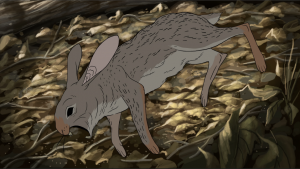 MV: Now, this might be a bit chicken and he egg, but did you want to tell this kind of story and so feature was the best fit, or did you find yourself wanting to make a feature, so you built the story to support it?
MV: Now, this might be a bit chicken and he egg, but did you want to tell this kind of story and so feature was the best fit, or did you find yourself wanting to make a feature, so you built the story to support it?
NC: I had the idea for this film kicking around for a few years before I got the idea to make a feature. It was just going to be a short film but I think I always new that it would be a big story. When I had the idea to make a feature, this story was the natural fit.
MV: So the challenge now, making it. Where are you at?
NC: I started working on this film in January. I’ve got about two minutes worth of animation completed. So, the progress is going actually quite well at this point.
MV: And this is still part-time?
NC: Yes. That’s the real challenge
MV: How does your day actually break down?
NC: I wake up at about 6am and work on my commercial work- storyboarding on a TV show.
I have a quota system worked out for myself so I know how much I need to do each day in order to deliver my board work on time. After I get that daily work done, I do work on my film. Some days I have more time than others, but I usually get at least a few hours each day to work on it
MV: Sounds very regimented.
NC: I guess it is. Discipline is the key to getting anything done I think.
MV: But you’re looking to find ways to spend more time on the film
NC: That would be ideal, if I could take some time off from my commercial work to devote to this film. I have the IndieGogo campaign going on right now, I’m going to be applying to various government grants over the course of this year. That’s the short term goal. I haven’t figured out a schedule for how long this film will take to complete, since I don’t want to scare myself with the scope of it. I’m taking it more-or-less one day at a time. If I manage to get the full amount from IndieGogo, i may hire on an assistant or two to help me out. That will hopefully speed things along.
MV: You’ve worked with a few other animators before, on Angora Napkin, right?
NC: We worked with a small crew of about 5 or 6 animators.
MV: And that went pretty well?
NC: Yeah… We had a bigger budget so we could hire a lot of really good animators that could turn around great work in a really short time. This film will have a much smaller budget.
MV: We’re famous in this country for the idea that there’s government money available for this kind of thing, is this the first time you’ve gone looking?
NC: I’ve applied for grants for my films before and have been turned down for all of them. I’ve learned some tricks since then from some people that I hope will prove more successful this time.
MV: And do you think this being a feature might also make it more likely?
NC: There’s different funding available, especially if I can find a distributor for it…but that’s a bit further down the road.
MV: When can you start that process? And how?
NC: That’s something I have to research…
MV: I’m jumping around a bit here, but aesthetically, you’re moving away from traditional cartoon. What sort of inspirations are you drawing from to tell this story?
NC: I think that the work of Studio Ghibli is probably the biggest inspiration. Miyazaki’s work seems to be able to walk the line between cartoon and realism in a really appealing way that I’ve always admired.
MV: Is there a film, in particular, that you go back to?
NC: Not really…his work is all great. Princess Mononoke is still probably my favorite film of his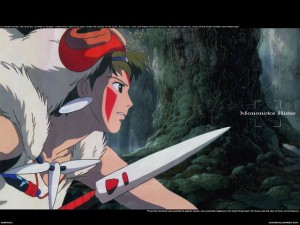
MV: That’s a pretty heavy one. One of the more “adult”.
NC: All of his films are pretty dense, even Totoro which is intended for little kids, a big contrast to the animated films that are being made in North America right now.
MV: Yeah, did you see Ponyo?
NC: Absolutely. It was great. I loved it
MV: I got the impression it was his way of giving the finger to American animation.
NC: I don’t know if he thinks about American animation much at all. The way he makes films is totally different. I think it’s just the difference between the corporate model of making movies and his, which is much more pure and auteur driven.
MV: A model I’d love to see take root here in Canada. Any thoughts on features in the west? As we see more films like Secret of the Kells and the Illusionist getting recognition, and a wider variety of studio films at the box office. Do you think there’s room for smaller films? and auteurs?
NC: Definitely, the field is starting to change. I think Europe still has a better attitude towards animation than here in North America, which is where most of the indie features are coming from. I don’t know if Canada is going to be able to spawn a wave of indie features in the same way. Here we would most likely have to follow the Nina Paley model and make them more as self-financed ventures.
MV: Yeah, really one man shows. And again, getting distributors onto the bandwagon would go a long way.
NC: The problem with Canada is that movie theatres don’t have to show Canadian films in the same way that tv networks have to show Canadian content, so you are directly competing with Hollywood films for screen space. The only exception being Quebec, which is most likely why the best Canadian films getting made right now are coming from Quebec, since they have a francophone market, so it’s more like Europe.
MV: At the same time, on would think Canada could have the right ingredients to build this kind of indie feature scene: lots of talent, an arguably supportive funding climate (I know we complain about it, but it’s way better than in most countries), but distribution is an issue.
NC: Yeah it definitely could happen.
MV: I know of a few others who are trying to get features off the ground, but I’m afraid they may still be working in too much of a studio method, so they need too much money, and too much manpower.
NC: Yeah this is the problem. That is an obsolete model in a lot of ways.
MV: Keep it small, keep it simple. Lowers the risk. But at the same time, there aren’t a lot of film-makers who I’d count on to follow through with their own films.
NC: I find it a bit strange that more animators don’t make their own films, since the tools are so accessible now.
That’s everything from Nick for now. We’ll follow his progress on Black Sunrise, and do our best to keep you up to date. You can keep tabs over on his production blog, and if you give any kind of a shit at all about independent animation and quality cartoons in general, skip a coffee and throw a few dimes at Nick’s IndieGogo campaign.

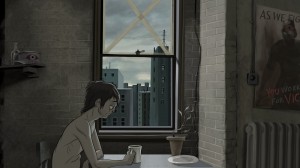


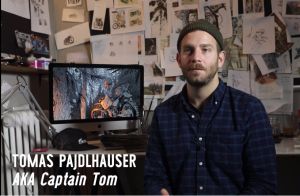
[…] In anticipation of tonight’s premiere for the Clockwork Elves, I’m digging up some old interviews with Nick Cross and resharing. Here’s one from way back in 2011, when Nick was still living in Canada and had just started working on his feature project, Black Sunrise. If you’re interested in reading more, part 2 is here. […]